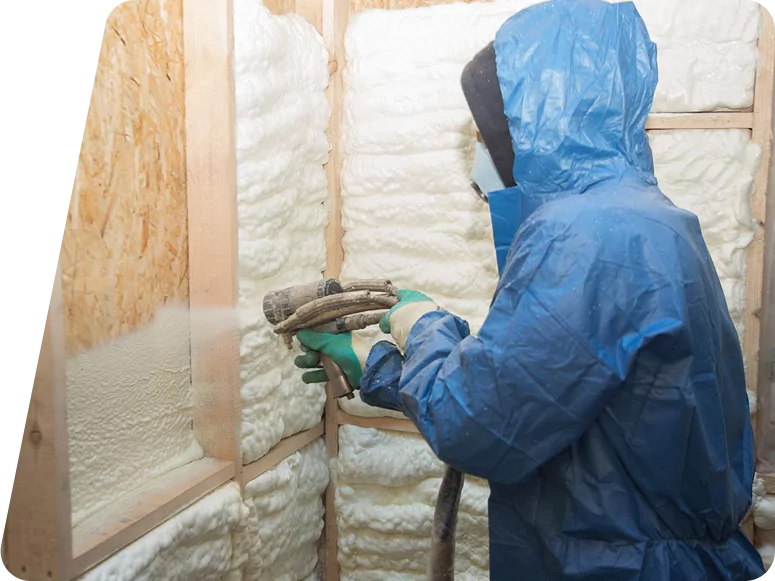The spray foam material is one of your continuing expenses as an equipment and business owner. That means it’s one of the biggest areas in your business where you can cut costs by reducing waste when storing or spraying SPF material. Use the following four tips to minimize SPF material waste effectively in your spray foam insulation business.
Tip #1: Keep Material Warm
When polyurethane spray foam material gets cold, it becomes unusable. As the temperature of the material drops, it thickens, and this viscosity can impair your spray gun and create even more difficulties, as the failure to deliver material to the machine will cause it to go off ratio, induce error codes, and set off the pressure sensors. If the applicator sprays a bad shot of material, it can result in lost time and money, doubling the impact on your bottom line. We recommend using barrel heaters. The drum heater will maintain the material inside the barrel at a perpetual temperature, ensuring it is heated at every point. Click here to discover more about them.
Tip #2: Use the Right Pump
Choosing the right transfer pump for your job is crucial to your success, as it’s important to check the pump’s design and ensure it can handle the spray foam material or coating material you are using. SprayWorks offers PMC 2:1 Transfer Pump – a pump newly redesigned for higher viscosities, easier cleaning, and varying pump lengths. This pump can apply polyurethane, Polyurea, and two additional component materials, and the interchangeable pump lengths fit up to a 250-gallon drum. Getting all the material from the base of the drum helps you use every bit of the product to save money on replacing the material.
Tip #3: Prevent Moisture in the Drum
Moisture causes iso crystals to form, blocking the drum, hose, and other components and eventually destroying the SPF material and equipment. Stopping iso crystals before forming means preventing moisture from settling into the drum. Attaching a Desiccant Dryer to the drum will remove moisture from the air during pumping. That stops the moisture from causing iso crystals, ultimately clogging the filters and prematurely curing the material while it’s still inside the hoses.
Tip #4: Transfer Material Correctly
Getting all the material out of the hose and returning it to the drum when changing the material can help your bottom line as well.





